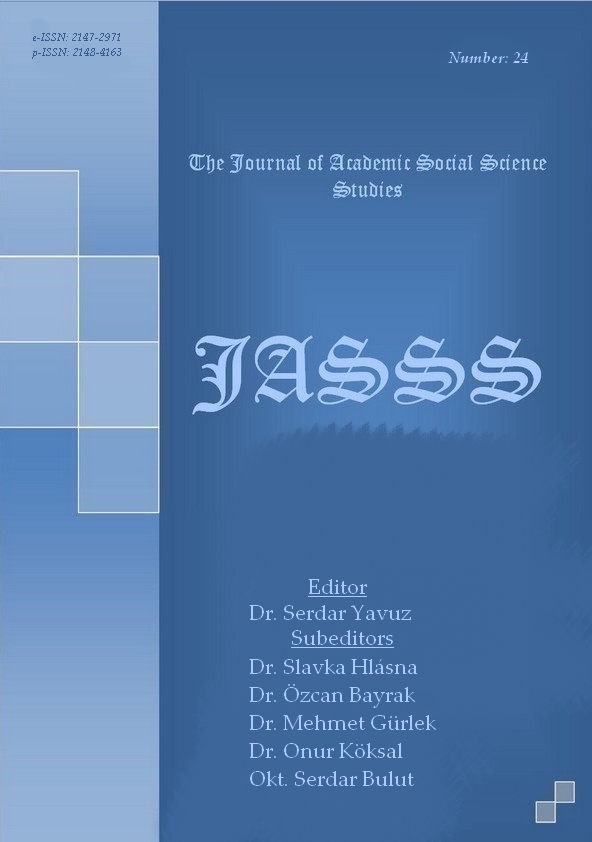Author :
Abstract
Bugün, kırsal sürdürülebilirlik sorunu Japon toplumunun en köklü ve ciddi sorunlarından birisi durumundadır. 1980'lerden bu yana kırsalın sürdürülebilirliği ve kalkınması üzerine birçok sosyal politika, proje geliştirilmektedir. Ancak, bu politikalar ve projeler, 1990’ların ortalarına kadar kent nüfusunun kırsalın doğal ve kültürel kaynaklarını tüketmesi yoluyla kırsalın kalkınmasını ve sürdürülebilirliğini sağlamaya yönelik bir duruş sergilemiştir. 1990'ların sonu itibariyle, köydeki kadın ve yaşlı nüfus kırsal kalkınma politikaları içerisinde anılmaya başlamış, ancak tam anlamıyla bir genel çerçeve çizilmemiştir. Bunun yanırısa, köydeki az sayıdaki genç nüfus, kente göç eğilimi dolayısıyla çoğunlukla kırsalın geleceği noktasında tartışma konusu dahi edilmemiştir. Halbuki, bugün göç eğiliminin en yakın merkeze doğru olduğu ve de ulaşımın son derece kolaylaştığı Japon kırsalında, köy ile olan sosyoekonomik ilişkilerin göçten bağımsız olarak belirli bir seviyede sürdürüldüğü ortaya konulmaktadır. Bu bağlamda, bugünkü yapı itibariyle, geçmişten gelen yerleşik nüfus anlayışının eskisi kadar etkiye sahip olmadığı düşünülmektedir. Bu sebeple de, kente göçten bağımsız olarak, genç nüfusun kendi yöresinin geleceğine ilişkin algı ve tutumunun ortaya konulması, orta ve uzak gelecekte oluşturulacak kırsal politikalar için önemli bir gösterge olabilecektir. Bunlara bağlı olarak bu çalışmada, Japon kırsalındaki kadın ve genç nüfusun, köyün geleceğine ilişkin tutum, algı ve planları çeşitli saha verileri üzerinden tartışılacak; kırsalın geleceği açısından kadın ve genç nüfus profilleri sınıflandırılmaya çalışılacaktır.
Keywords
Abstract
As generally known, Japanese society has experienced a big change not only economical but also socially since the second half of the 20th century, particularly since the 1950s. Due to urbanization in the 1960s, the younger population started to move to urban areas that caused the depopulation phenomenon (Kasoka) in rural areas and Japanese rural community has started to lose its functions for maintaining daily life and agricultural productivity since then. By the late 1970s, the decreasing rural population coupled with the sustainability of daily life and farming became one of the most serious issues in rural Japan. Since 80`s, many kinds of social policies, development programs and projects which made the rural society and its nature, resources and culture consumption object for urban dwellers were designed and carried out. Moreover, people such as rural women and elderly population who had vital issues and real life experiences concerning rural living were mostly handled as ghost members in rural development policies and projects until the 1990s. In 1990s, rural women and young population have started to take part in studies concerning rural issues remarkably. However, most of these studies have considered the rural women totally and not attempt to classify them in terms of sustainability issues of the daily life, agricultural production and economic development. On the other hand, the potential of the young population could have a meaning in terms of sustainability of the community only when they were permanent residents in the rural community. It is indisputable fact that most of young generation today still has a tendency to move to urban areas. However, studies show us that they have still strong socioeconomic relationship with the community, and some actual roles in terms of daily maintaining and agriculture even they have moved out. That is, it is clear that the daily life of the rural community is more dependent on these “ghost members” than it had been. Therefore, in this paper, roles and functions of rural women and the young population in the daily life and attitudes concerning the future of the community will be reconsidered. Then, both rural women and the young population will be classified in terms of sustainability of the local community. In this way, the sustainability problems of local communities are expected to be discussed in a fresh perspective to establish a new paradigm for considering the issues of these local-rural communities.
